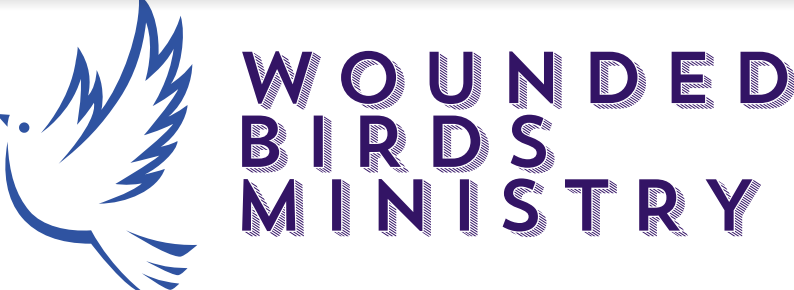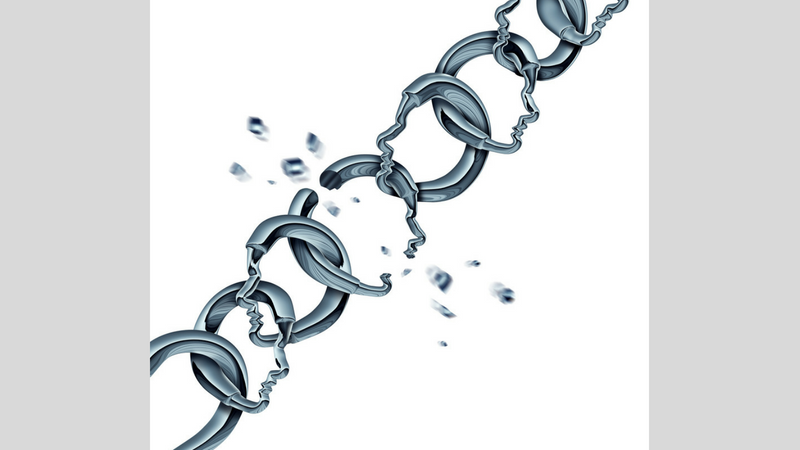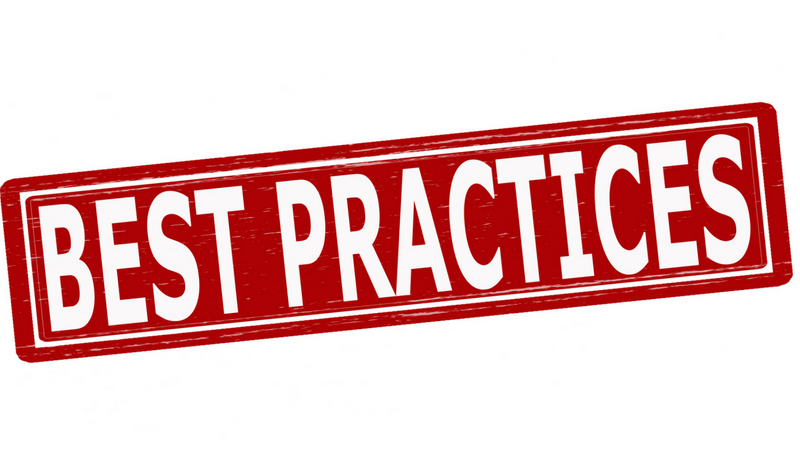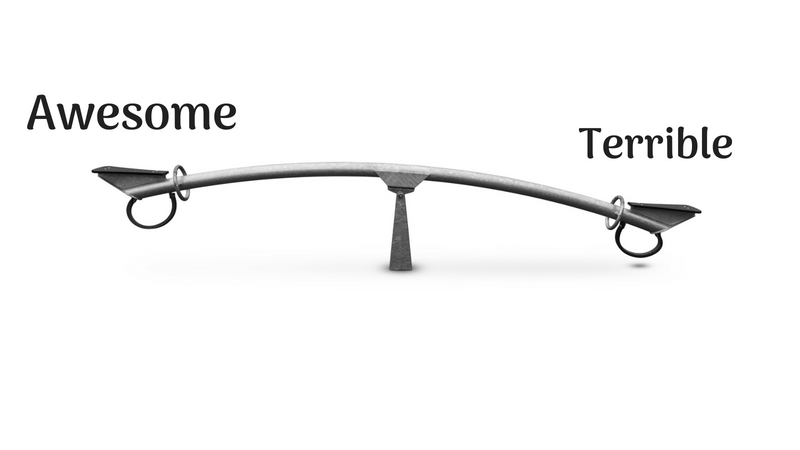The White Pill: My Journey to Bipolar Disorder
One of the ways we fight stigma is by sharing our stories. Here, I share the story of how I decided to start medication, and how it helped me get to the right diagnosis of bipolar disorder.
The Appointment
The office is bland — standard corporate fare. An L-shaped desk, a monitor, two chairs, and a cheap-fabric-covered cubby are punctuated by a broad-leafed, slightly emaciated fern in a gray pot in the corner. Behind her desk, furiously typing away at all her notes, the doctor paused and looked at me. “Well, before we can determine what else is going on, we need to address your depression.” The blood drained out of my face. Depression? Of all the outcomes I expected from this appointment, a diagnosis of “depression” wasn’t even on the list. It’s just not how I thought of myself. Maybe at other times of my life, but not now.
I couldn’t tell you how I got back to my car after that, or how I drove home. Depression. Depression. Depression. The word echoed in my head. As someone who generally believes in facing all the hard things face-on, I started looking at the past few months, evaluating myself against the possibility of this new word. Well, I was having trouble getting up in the morning, but that had been true for over a year now. And the couch and I were now intimate friends. Taking care of the house was really more than I could face on an average day — but that was no surprise; we live in a big house. And I was learning how to be a homemaker for the first time, that was stressful. Cooking didn’t come naturally to me, and my daughter and I were both adjusting to having me available full-time. But I wasn’t suicidal. And I still laughed. I was still able to find humor in the little details of life. Maybe not the way I used to, but still — I could laugh. At home I started Googling away furiously, determined to get to the truth.
Two hours later, I was ready to accept the truth. Depression wears many faces, and in this case, that face was mine.
Treatment Begins
At my first appointment, my therapist (let’s call him “Mike”) and I got to know each other. Discussing my treatment plan, we agreed that I would enter some skills-focused classes offered by the facility. I would spend four weeks learning about depression: what it is, triggers, and what I could do to counteract its effects and hopefully stave off another episode. I would also meet with my therapist every couple of weeks, and I would journal independently at home. And then Mike threw it out there, casually, “Oh, do you want a referral to the psychiatrist for a prescription?” “No. I want to know that what I feel is real,” I demurred. I couldn’t tell you if he thought it was a good idea or not for me; I never asked him and he showed no judgment when I declined.
Over the course of the next few months, I took classes on depression, anxiety, cognitive behavioral therapy (CBT), and dialectical behavioral therapy (DBT). Journaling nearly every day, I maximized my opportunities to use the skills I learned. If there was one thing I knew, it was that I wanted to feel better. There is no question that I made progress; it was evident to my family and friends that I was feeling better, and therapy yielded tremendous gains. But feeling better wasn’t feeling “good,” and progress was stalling.
I Change My Mind
At my next appointment, I took a deep breath, held it, and told Mike I wanted to look into a prescription.
Growing up in the 80s and 90s, I was raised in a family strong in the belief that our bodies are amazing things. They needed exposure to dirt and colds and the outside world so that we could develop immunities and be healthier as adults. Medications were simply not the first line of defense in our family, although we took Tylenol for a fever just like everyone else. The rule in our home was clear: if you were sick for more than three days, only then was it time to see the doctor.
My family was reflective of the broader culture of the time. Mental health was just starting to come into its own as a topic and concern. Therapy was still highly stigmatized, and the research was thin, especially when compared to what we know today. Even so, the topic of ADD was surfacing more often in the world beyond our front door, and Ritalin was the choice-du-jour for helping “antsy” kids. I remember my mother feeling appalled at kids being medicated for just “having a little extra energy” and “being turned into zombies” when all they needed was to be more involved in sports or get more time playing outside. Although I believed there was more to the situation than what my mother understood, her attitudes bled into mine and bred into me a belief that only really “crazy” people needed medications, and those were the people you should avoid in the first place.
Yet now I sat in the lobby of my psychiatrist’s office, wondering what rabbit hole I was going to fall down. Would I find myself in the land of zombies, not depressed but not — well, anything really? Would I find myself in a fantasy land, unnaturally exhilarated and perpetually happy, the person that everyone avoids due to her overly saccharine state? Worse, what if it didn’t work at all? And then there were the horror stories I’d heard whispered, the ones where the medication darkened the depression and the outcomes were — well, always undefined, but, you know: bad.
The nurse fetched me, and, after getting all my vitals checked, I was in Dr. Gupta’s psychiatric office.
The Psychiatrist
Dr Gupta had already reviewed my psychiatric file and was familiar with my general health history, so he got right down to business. “I see you’ve been doing a lot of work and it seems like you’re making progress. What brings you here today?” I shared my goals, my frustration with the plateau, and that I just wanted to see if taking a pill — even on a short-term, temporary basis — might help me break through. After some additional discussion (and a lot of questions on my part), I walked out of the office with a scrip in my hand.
The next morning, I held that first pill in my hand, staring at it. It was a true Matrix moment, wondering if the whole world was about to change and how. I swallowed it and looked at myself in the bathroom mirror: “Well, Teresa, I guess you’ll just have to see.”
It was two weeks before I felt anything change and it took me by surprise when it occurred. I don’t remember exactly what I was doing, but I suddenly noticed that I could feel my brain. Not my head, not my skull, but my brain — inside my head. Not only could I feel my brain, but I could feel a fog literally lifting off it. It was one of the oddest sensations I’ve ever experienced; it was like a cloud of steam floating off into the ether. It went on for a few days, and I noticed that I was feeling better: the pill worked! I still had a little under two weeks before I was scheduled to revisit the psychiatrist and give him an update, but I felt no rush to return when things were going so well.
A few days later, toward the end of the third week, I was sitting in my car in the garage, and reading on my phone. Suddenly, I had a burst of energy flow into my body. It was sharp, it was unexpected, and I was joyous. Not only was I out of the depression, but my old self was coming back! I clapped my hands once in excitement and sashayed into the kitchen. With the music blasting, I danced and sang my way around that space for the next two hours while I scrubbed my kitchen down. My kitchen wasn’t just clean: it sparkled. The drawers were all cleaned out and re-organized; the pantry looked amazing. The cabinets were wiped down and set to rights. Even the oven looked fantastic. I wrapped up with the mop and sent an email to Mike: “Something is working. I am laughing and dancing and singing. If this is life on a pill, then sign me up!” A few hours later, I came down off the high and that night, I slept incredibly well.
On Sunday, I had a second experience only this time it was not as fun. My husband and I attend church consistently, and we love the worship music that is played. It is upbeat, it is well-executed, and it really helps us attune our minds and hearts on Jesus. On this particular Sunday, we were standing side-by-side when the energy rush came. It wasn’t the same sensation I’d had before; this one was a strong, relentless urge to dance wildly around the worship space. I recognized this sensation and I flashed back to some of the craziest and riskiest moments of my life; the times when I was just about to implode my life. It didn’t just scare me; it terrified me. I stopped singing; it took all my energy to simply stand next to my husband, mentally sitting on my hands and desperately praying for the urge to pass. Once the singing ended and we sat down, I started to feel a little bit better, but it still took more than an hour for the sensation to really dissipate, and I continued to feel the echoes of it for several hours.
A New Diagnosis: Bipolar Disorder
Two days later, I sat in front of Dr Gupta. “How did it go?” he asked me brightly. “I see you sent Mike this email; he forwarded it on to me.” “Well,” I started, and I filled him on the details of the two experiences. “I have to tell you, it really scared me. It’s been a long time since I’ve felt something like that, and every time it’s happened, I’ve destroyed everything I love about my life.”
“Ahhhhhh….,” he said. “I bet you have bipolar disorder.” He pulled out a sheet of paper and shot off a series of questions, digging in deeper on a few. When he finished, he looked at me confidently. “We need to treat you for bipolar disorder.” We went back-and-forth from there, covering the details of what bipolar disorder is and how it works, and the treatment approaches for it. At the end, he had one recommendation for me. “You probably won’t feel any different on it for the first four weeks, and that’s all right. We’re testing you at a really low dosage to make sure you won’t have a very specific side effect. The risk is low in general, but I want to make sure.”
Four weeks later, I returned to his office: I wasn’t feeling any better, and I wasn’t feeling any worse. The depression didn’t seem to be back, and there were none of those surges of energy I’d had on the anti-depressant. “We’re headed down the right path,” Dr. Gupta grinned at me. “Let’s try the next dosage level and see how it affects you.” From there, it only took two more appointments to get the dosage at an appropriate level. While I will always have the extreme mood swings, insomnia, and other related symptoms, they are lessened for me now. And since I started on this treatment path, the help I’ve gotten from that little white pill in an orange bottle means that therapy is more effective and my path to recovery is accelerated.
Will I ever be healed? My God is mighty, and He can do that if He chooses, but the more likely outcome is remission, where my mood swings happen less often and are not as severe as they once were. I engage in my local community now, I’ve become a fairly competent homemaker, and I’m starting to tackle goals again. I still have bad days, but on balance, even my bad days aren’t that bad.
That little white pill makes a big difference for me and for my family, and I am grateful for it every day.
Have you chosen to walk through God’s door to put on your new self? What’s holding you back? What encourages you?
Looking for daily inspiration and community? Join our warm and supportive Facebook group!







